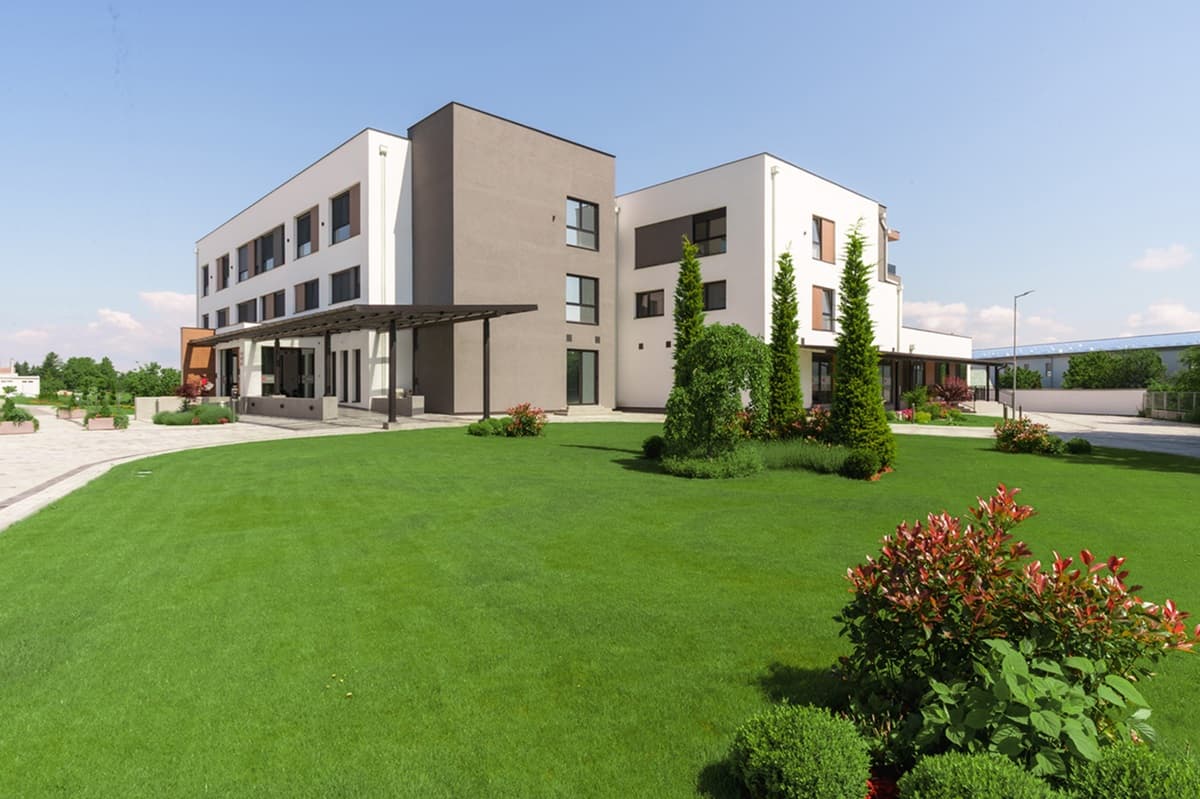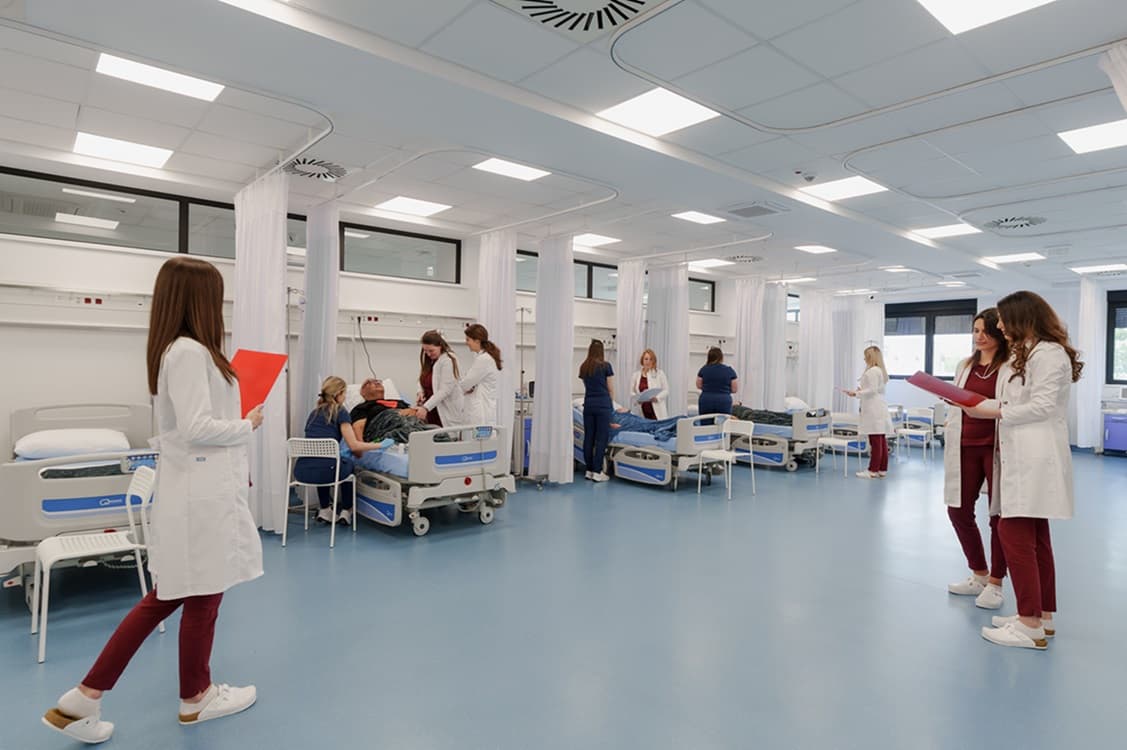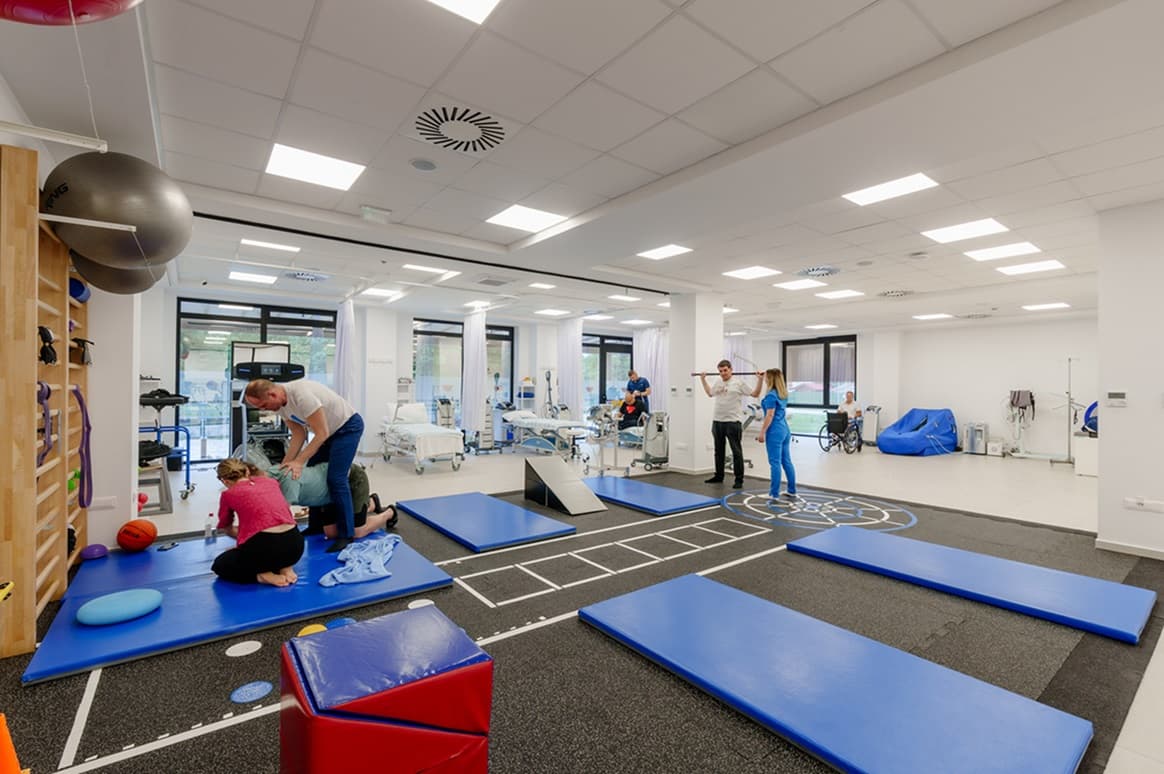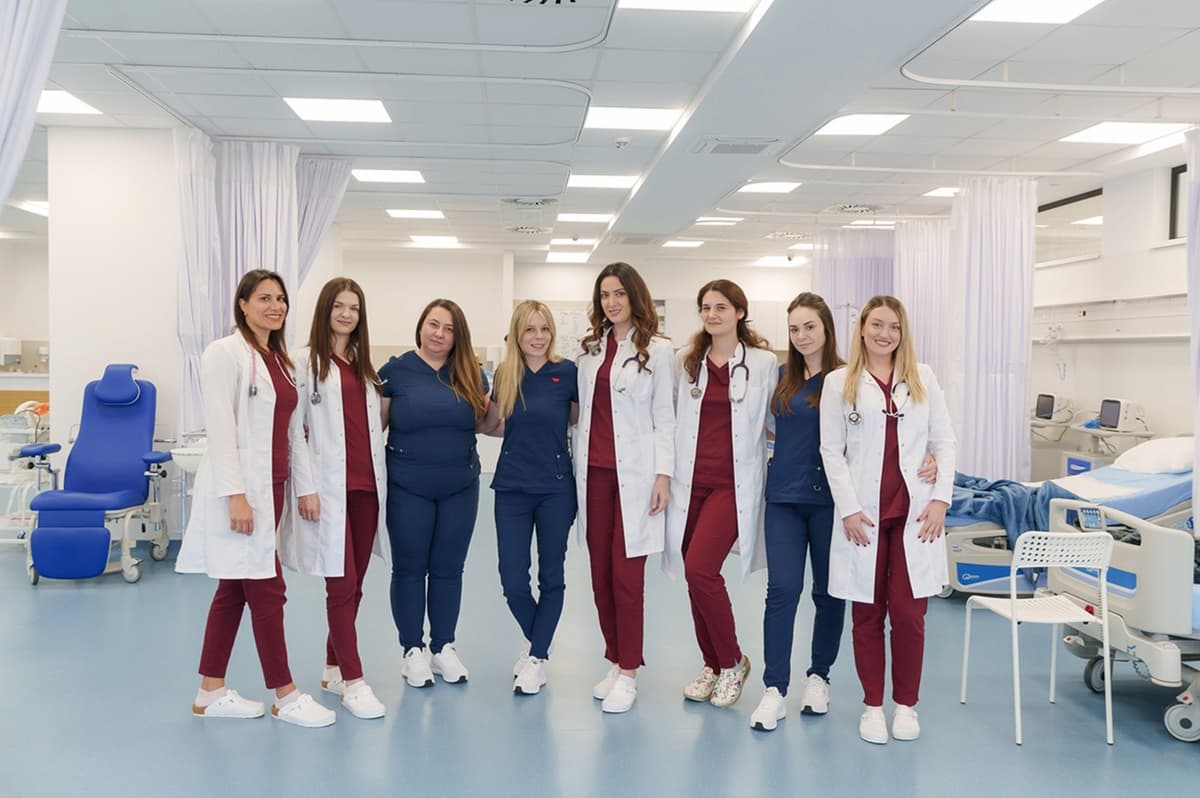Stem cell therapy in Norway is generating growing interest as patients follow the global trend toward regenerative medicine. Yet Norwegians face challenges at home—limited local treatment options, high costs, and strict regulations. Many are looking abroad for solutions. Increasingly, they turn to leading European clinics—especially in Serbia—where advanced regenerative treatments are both accessible and affordable.

Stem Cell Therapy—A New Era in Regenerative Medicine
Stem cell therapy harnesses the body’s ability to repair itself. It mainly relies on mesenchymal stem cells (MSCs) derived from a patient’s own bone marrow or fat or from ethically donated umbilical cord or placenta. These cells naturally migrate to inflamed or injured areas, releasing signals that calm inflammation, promote repair, and improve overall function.
Around the world, this approach is moving from experimental trials into recognized medical applications. Studies over the past decade have demonstrated that mesenchymal stem cell (MSC) treatments are generally safe, with no serious adverse effects reported.
Clinicians are now using stem cell therapy to reduce inflammation and aid recovery in refractory conditions like heart disease, arthritis, neurological conditions, and many others.
Stem Cell Therapy in Norway—A Developing Field
Stem cell treatments in Norway are still in an early stage. Most stem cell procedures are available only through research studies or hospital trials. For example, the autologous hematopoietic stem cell transplant (HSCT) for multiple sclerosis (MS) is primarily available through a clinical trial at Haukeland University Hospital. Outside of such programs, Norwegians with chronic or degenerative conditions have few practical options to get stem cell therapy in Norway.
A few private clinics in Norway do advertise regenerative treatments, but these are usually limited to cosmetic procedures or PRP-like therapies rather than true stem cell interventions.
Is Stem Cell Therapy Legal in Norway?
Stem cell therapy in Norway is legal, but clinical use of stem cells is tightly regulated. The Norwegian Medicines Agency and the Norwegian Directorate of Health are developing strict clinical guidelines to govern stem cell treatments in Norway, ensuring safety while limiting innovation. Under national guidelines, any advanced stem cell treatment in Norway typically must occur as part of an approved clinical trial:
| Stem Cell Type | Status of stem cells in Norway | Notes |
| Adult stem cells (MSCs, HSCs) | ✅ Allowed | Used for regenerative, orthopedic, and hematological conditions. |
| Umbilical cord blood stem cells | ✅ Allowed | Ethically accepted; applied in transplants for blood diseases. |
| Autologous & allogeneic transplants | ✅ Allowed | Patient’s own or donor cells used under medical supervision. |
| Embryonic stem cells (ESCs) | 🚫 Restricted | Creation for research or use beyond 5 years of storage banned. |
Many Norwegian patients travel abroad for more advanced, personalized stem cell therapy. In Europe, they often choose Serbia, where clinics like Swiss Medica provide broader treatment options and multidisciplinary care while maintaining EU-level safety and ethics.
Get a free online consultation
To learn if stem cell therapy is right for you, schedule a free, no-obligation online consultation with our medical advisor. In just 15–30 minutes, you’ll understand how the therapy works, how it’s delivered, and whether it can help in your case.

Medical Advisor, Swiss Medica doctor
How Much Does Stem Cell Therapy Cost in Norway?
Since private stem cell therapy in Norway is rarely available and lacks standard pricing, the country is not among the cheapest countries for stem cell treatment. Stem cells in Norway offered through private clinics or under hospital exemptions are assessed individually and typically come at a high cost due to limited availability and operating expenses:
| Location | Availability | Average Cost Range (€) | Notes |
| Norway | ❌ Very limited | Case-by-case, likely €15,000–€25,000+ | Very few clinics for stem cells; mostly cosmetic or PRP-like treatments. High operating costs, no standardized pricing. |
| Western Europe | ⚠️ Limited, regulated | €15,000–€30,000+ | Treatments mainly within approved programs or trials; long waiting lists. |
| Serbia | ✅ Widely available | €7,000–€31,000* | 30–50% cheaper than Western Europe, individualized programs for a wide range of conditions. |
*Prices are indicative, based on January 2025, and may vary with condition severity and cell quantity required.
What Conditions Can Be Treated with Stem Cells in Norway and Other Countries?
Stem cell therapies in Norway are primarily used for cosmetic or PRP-like treatments. Use outside of experimental settings is still limited to the fields of neurology and internal medicine.
Clinics in Serbia, on the other hand, may treat a broader variety of conditions in accordance with national regulations and bioethical principles:
Neurological Diseases—From MS to Stroke Recovery
In neurological disorders, stem cell treatments for MS or stroke aim to aid nerve repair and reduce damaging inflammation. The treatments’ goal is to support neural health and improve daily function. Early trials indicate these treatments are safe for patients with MS, spinal cord injury, and ischemic stroke.
Orthopedic and Sports Injuries
Orthopedic applications are among the most common uses of stem cells today. Mesenchymal stem cells for arthritis treatment, joint injuries, and tendon damage are used to aid cartilage regeneration and alleviate arthritis pain.
Autoimmune and Degenerative Disorders
Conditions like rheumatoid arthritis, lupus, and other autoimmune diseases are being treated with stem cells for their immune-modulating abilities. Research on using umbilical cord-derived MSCs in rheumatoid arthritis has highlighted their potential to regulate the immune response and promote tissue repair.
Aesthetic and Anti-Aging Applications
Clinics like Swiss Medica offer anti-age stem cell treatments to rejuvenate skin with the goal of improving skin texture and elasticity. There are also ongoing studies and approaches for hair growth and anti-aging systemic therapies.
Safety and Ethical Standards in European Stem Cell Clinics
Stem cell therapies in Norway, other European countries, including Serbia, follow strict bioethical and safety rules under the Good Manufacturing Practice (GMP) protocols and the World Health Organization (WHO) standards.
All cell processing must take place in sterile, controlled environments under rigorous quality supervision. Treatments use either the patient’s own cells or medically approved donor mesenchymal stem cells, produced in licensed GMP facilities. Embryonic stem cells are not used in clinical practice due to ethical and legal restrictions across Europe.
The key difference between stem cell therapies in Norway and Serbia lies in the scope of permitted therapies. With the same emphasis on laboratory safety and ethical standards, Serbian clinics can offer regenerative medicine for a broader set of conditions.
What Country Is Best for Stem Cell Treatment?
Patients often compare stem cell treatments in Norway and other European countries to find the right balance of quality, legality, and cost. Here is a review of the primary destinations of patients:
| Country | Medical Standards & Regulation | Availability & Patient Benefits |
| Switzerland | Very high—strict oversight, EU-aligned | Limited to approved or trial-based therapies; high cost. |
| Germany | High—regulated under EMA and national laws | Access mainly through certified hospitals and trials; long waiting times. |
| Spain | Strong biomedical system, highly regulated | Mostly restricted to clinical trials or exemptions; limited access. |
| Serbia | EU-level medical standards, licensed and supervised clinics | Broad access with affordable, personalized programs. Clinics like Swiss Medica provide multidisciplinary care, including physiotherapy, IMR therapy, medical device therapy, and speech therapy—offering comprehensive rehabilitation alongside stem cell treatment. |
Stem Cell Therapy in Serbia—Quality, Affordability, Results
In contrast with stem cell treatments in Norway, Serbian clinics like Swiss Medica are gaining recognition for their personalized stem cell therapies in modern facilities, offering 30–50% lower costs than comparable treatments in Western Europe.
Swiss Medica’s hospital in Belgrade is one of Serbia’s leading clinics that follows the same medical regulations as those in EU countries:
- Our own laboratory is GMP-certified, following strict sterility and safety protocols.
- All stem cells we produce are rigorously tested for viruses, bacteria, and viability before being used in patient treatment.
Advanced Technology and Expert Teams
A key strength of Swiss Medica is our integration of advanced biotechnology and experienced medical teams:
- State-of-the-art facilities: In 2024, Swiss Medica opened a new 10,000 m² hospital and research hub in Belgrade, featuring an in-house laboratory and advanced technology for cultivating and delivering over 30 types of cell products.
- Experienced medical team: The clinic employs about 250 experienced doctors and researchers, including experts in neurology, orthopedics, and immunology, who collaborate to treat complex regenerative medicine cases.
- Personalized attention: A high doctor-to-patient ratio (3–4 patients per doctor) guarantees focused, individualized care.
Large and well-equipped, Swiss Medica’s hospital provides patients with a variety of services, including a lab, procedure rooms, cozy lodgings, and healthy meals. It is a place to recover and relax.
Personalized Approach for Every Patient
What really sets the Swiss Medica approach apart is the level of personalization and holistic care:
- Comprehensive evaluation: Each patient undergoes a detailed assessment to design a customized treatment plan tailored to their diagnosis, medical history, and health goals.
- Personalized protocol: The therapy combines stem cell treatment with supportive methods like physiotherapy, occupational therapy, IMR therapy, or medical device procedures to enhance recovery and long-term results.
- Continuous monitoring: Doctors closely track each patient’s progress, adjusting the plan as needed and maintaining direct communication throughout the stay.
- Follow-up: Post-treatment care continues through regular follow-up check-ups.
For patients looking for stem cell treatments in Norway and neighboring countries, Serbia—and especially Swiss Medica in Belgrade—has become an attractive destination for regenerative treatment.
Traveling to Serbia is simple, with direct flights from Oslo and other major European cities and visa-free entry for many nationalities. Upon arrival, Swiss Medica provides full support—airport pickup, transfers, and multilingual assistance—ensuring a smooth start to your stay.
Step-by-Step: How to Start Treatment in Serbia
This is a simple step-by-step guide to the patient journey at Swiss Medica.
Step 1. Start with a Free Medical Consultation & Evaluation
Reach out to the clinic for an initial online consultation. You’ll share your medical history, symptoms, and any test results needed. A regenerative specialist will review your case and determine preliminarily if you are a candidate for stem cell therapy.
Step 2. Get a Personalized Treatment Plan
If you’re eligible, our doctors will create a tailored treatment plan for you. It will include the type of stem cells, the number of injections or infusions, any other treatments (like physiotherapy), the expected length of stay, and a clear breakdown of the costs.
Step 3. Feel Safe with Our Travel and Accommodation Support
All patients stay in comfortable hospital rooms, with the option for one accompanying relative. Upon arrival in Belgrade, a driver will meet you at the airport and take you directly to the clinic. Throughout your stay, our staff assists with all practical needs—like local guidance and translation—so you can focus entirely on recovery.
Step 4. Undergo Therapy and Follow-Up Care
You undergo the stem cell treatment program as planned, typically over 3–9 days. Before you leave, doctors will give you detailed aftercare instructions and therapies, which may include exosomes or other cell-based products to use at home. Also, we will schedule follow-up calls over the next 3–6 months to monitor your progress.
Real Results—What Patients Say After Stem Cell Therapy
Many patients—from stroke survivors to parents of autistic children—report tangible progress, such as walking longer, speaking clearer, or feeling more energetic.
Hanne from Norway
“I’ve had MS since 1995—more than twenty years. In Norway, I only got a bit of rehabilitation and some medicine, but not much help. Then, I found Swiss Medica.
Here, everything felt different. The doctors were attentive, and I was warmly welcomed from the airport to the hospital. After treatment, I noticed real changes—my right hand got stronger, and I could finally eat soup by myself again after many years.”
Rolf from Norway
“After a heart attack and four strokes, my left side was paralyzed—I couldn’t walk, lift my arm, or swallow properly. At Swiss Medica, I received five stem cell infusions along with physiotherapy, magnetic stimulation, and manual therapy. Now I can lift my arm, move my foot, and speak and swallow much better. The whole medical team was really kind and helpful to me.”
Watch real patient stories on our YouTube channel to see these improvements firsthand.
Note: Individual results can vary, but the overall trend is positive.
Ready to Begin Your Recovery Journey? Contact Our Clinic in Serbia
Taking the first step toward healing can feel overwhelming—but we’re here to make it as smooth as possible. Our medical advisors are available now to discuss your case and answer all your questions. Your recovery journey is our priority, and it could begin today with a simple conversation.
Contact us
Book a free, no-commitment consultation to evaluate your condition and explore how stem cell therapy might help you.

Medical Advisor, Swiss Medica doctor
FAQ
1. Are stem cell treatments abroad safe?
Yes—when you choose a reputable clinic, stem cell therapy can be as safe as any standard medical procedure. Countries like Serbia enforce strict regulations and quality standards for stem cell treatments.
2. How long does recovery take after stem cell therapy?
Recovery time can vary depending on the condition treated and the type of therapy. The actual procedures are minimally invasive, so physical recovery from those usually takes just a day or two of rest.
3. What is included in the cost at Swiss Medica?
At Swiss Medica, each stem cell treatment package includes initial medical consultation, cell harvesting, and administration. The program also covers supportive therapies, accommodation, meals, airport transfers, and 24/7 patient assistance.
List of References:
Wang, Y., Yi, H. & Song, Y. The safety of MSC therapy over the past 15 years: a meta-analysis. Stem Cell Res Ther 12, 545 (2021). https://doi.org/10.1186/s13287-021-02609-x
Kvistad Christopher Elnan , Kråkenes Torbjørn , Gjerde Cecilie , Mustafa Kamal , Rekand Tiina , Bø Lars. Safety and Clinical Efficacy of Mesenchymal Stem Cell Treatment in Traumatic Spinal Cord Injury, Multiple Sclerosis and Ischemic Stroke – A Systematic Review and Meta-Analysis. Frontiers in Neurology. Volume 13 – 2022. https://www.frontiersin.org/journals/neurology/articles/10.3389/fneur.2022.891514
Gugliandolo A, Bramanti P, Mazzon E. Mesenchymal Stem Cells in Multiple Sclerosis: Recent Evidence from Pre-Clinical to Clinical Studies. Int J Mol Sci. 2020 Nov 17;21(22):8662. doi.org/10.3390/ijms21228662
Freitag, J., Wickham, J., Shah, K., & Tenen, A. (2022). Real-world Evidence of Mesenchymal Stem Cell Therapy in Knee Osteoarthritis: A Large Prospective Two-Year Case Series. Regenerative Medicine, 17(6), 355–373. https://doi.org/10.2217/rme-2022-0002
Lv X, Wang L, Zou X, Huang S. Umbilical Cord Mesenchymal Stem Cell Therapy for Regenerative Treatment of Rheumatoid Arthritis: Opportunities and Challenges. Drug Des Devel Ther. 2021 Sep 15;15:3927-3936. doi.org/10.2147/DDDT.S323107
Neves J, Sousa-Victor P, Jasper H. Rejuvenating Strategies for Stem Cell-Based Therapies in Aging. Cell Stem Cell. 2017 Feb 2;20(2):161-175. doi.org/10.1016/j.stem.2017.01.008
MD, Pediatrician, Regenerative Medicine Specialist











